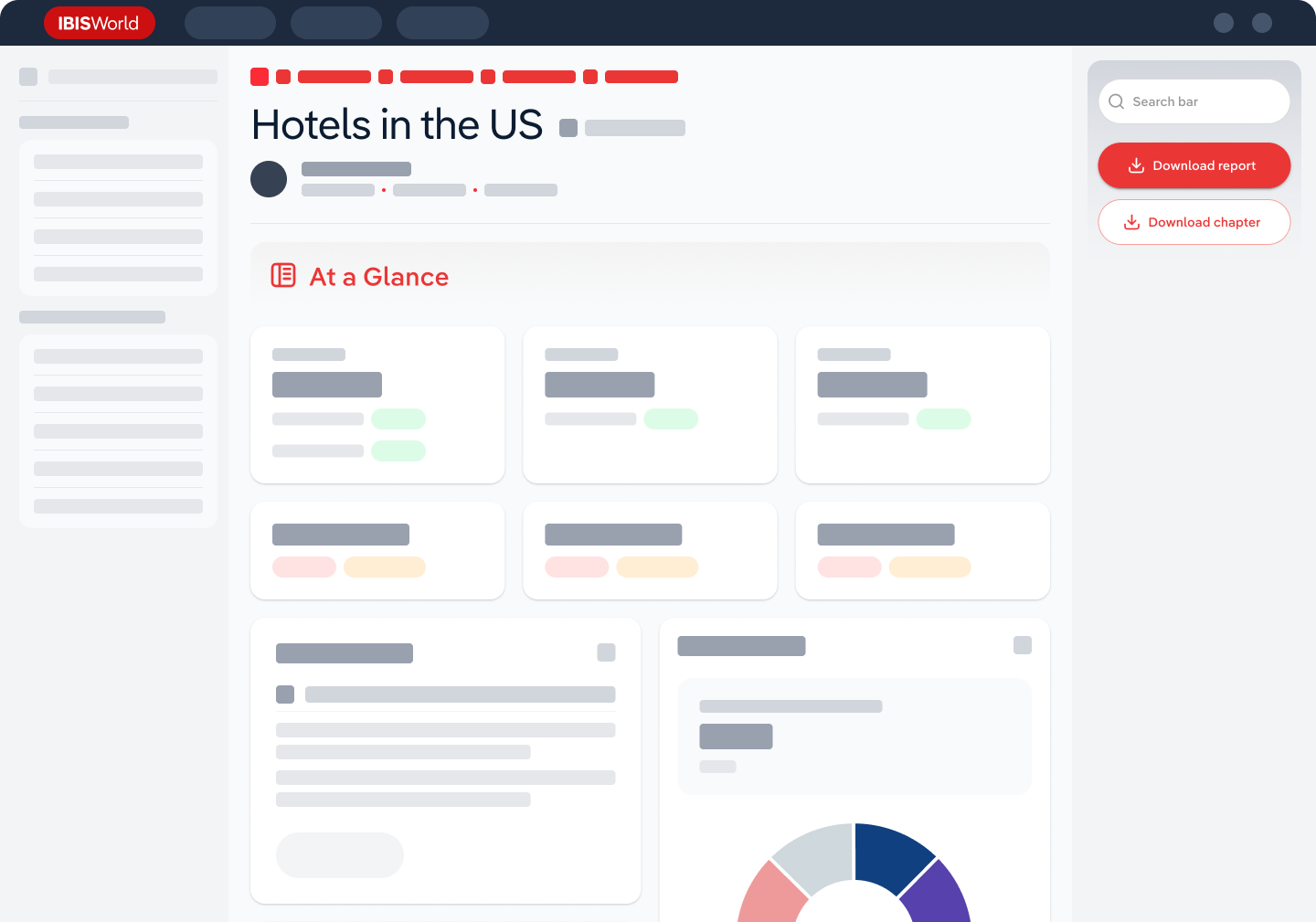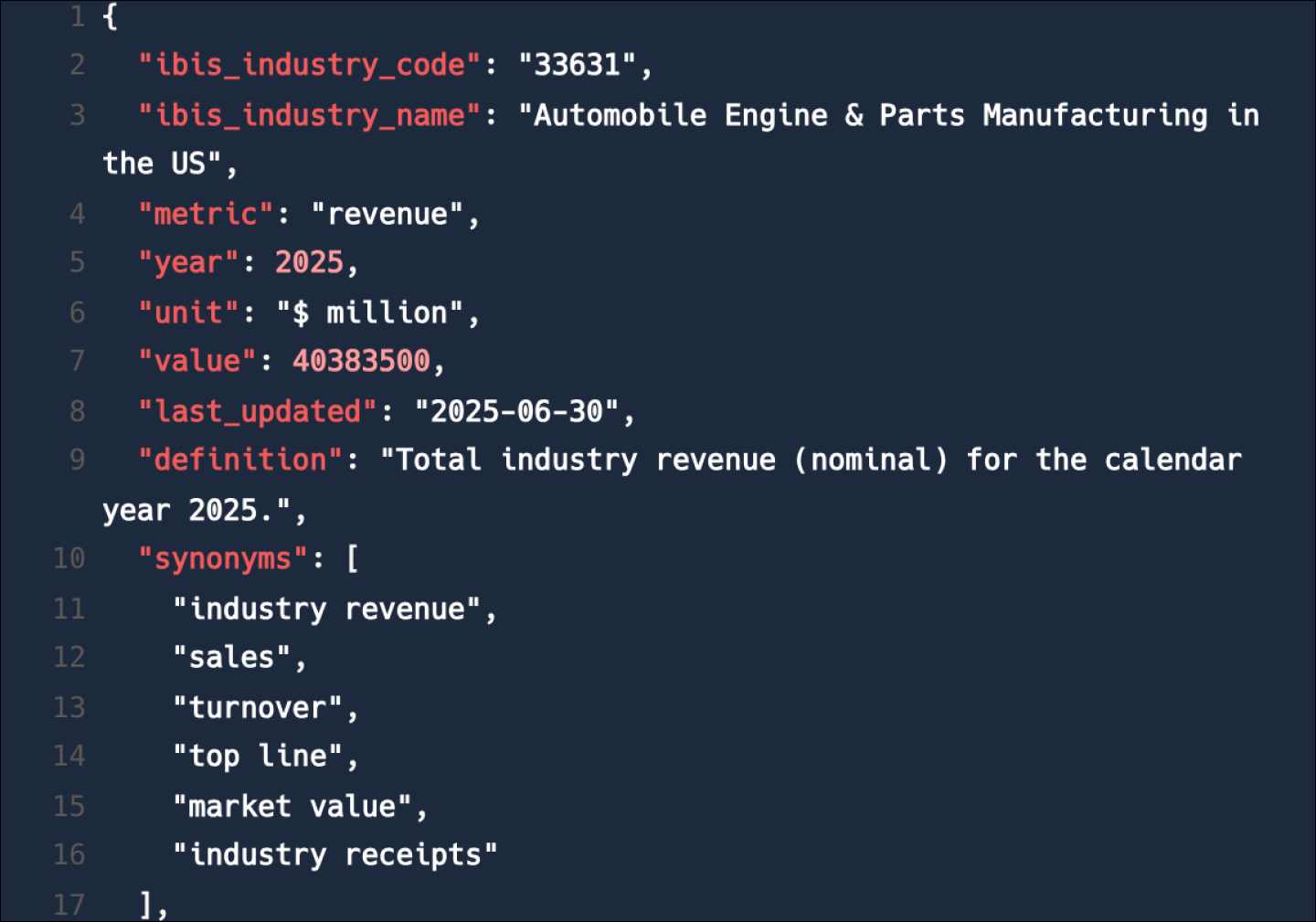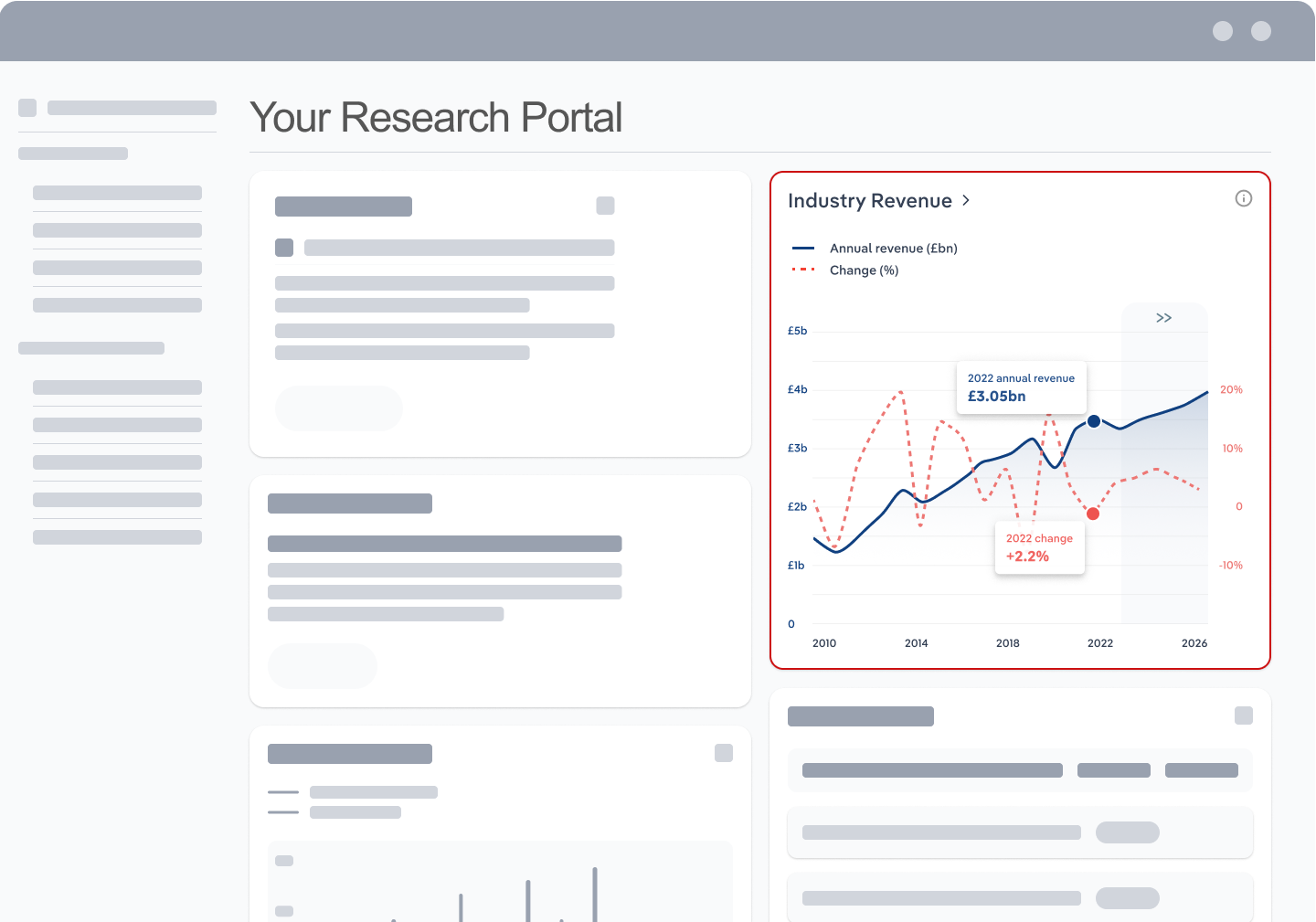Industry Statistics and Trends
Market size and recent performance (2014-2029)
Industry revenue has grown at a CAGR of 1.0 % over the past five years, to reach an estimated $335.7bn in 2024.
Trends and Insights
The strength of equity markets typically tracks the industry’s performance
- Global equity markets significantly influence revenue for reinsurance carriers worldwide since providers invest in stocks to generate investment income to help pay various customer claims.
- Additional trends and insights available with purchase
Industry outlook (2025-2030)
Market size is projected to grow over the next five years.
Trends and Insights
Steady economic conditions worldwide will benefit the industry
- While most of the world’s economies recently faced challenges related to towering inflation, rising interest rates and recessionary fears, world GDP will increase steadily during the outlook period due to industrialization throughout the developing world, technological progress and rising consumer confidence. Strong economic growth will raise consumer spending and disposable income worldwide, encouraging more households and individuals to invest in cars, houses and other structures.
Biggest companies in the Global Reinsurance Carriers
| Company | Market Share (%)
2024 | Revenue ($m)
2024 | Profit ($m)
2024 | Profit Margin (%)
2024 |
|---|---|---|---|---|
Munchener Ruckversicherungs-Gesellschaft Aktiengesellschaft | 43,760.3 | 5,520.2 | 12.6 | |
Swiss Reinsurance Company Ltd. | 37,441.8 | 4,454.2 | 11.9 | |
Berkshire Hathaway Inc. | 27,428.3 | 1,056.2 | 3.9 |
To view the market share and analysis for all 3 top companies in this industry, view purchase options.
Products & Services Segmentation
Industry revenue is measured across several distinct product and services lines, including P&C reinsurance, Life, health and annuity reinsurance and Investment activities. P&C reinsurance is the largest segment of the Global Reinsurance Carriers.
Trends and Insights
Returns on property and casualty (P&C) insurance are quite volatile
- P&C insurance covers businesses' and individuals' property and liability losses. Popular lines of P&C insurance include passenger auto, homeowners' and workers' compensation coverage.
- More insights available in the full report
Table of Contents
About this industry
Industry definition
Global reinsurance carriers focus on assuming all or part of the risk associated with existing insurance policies originally underwritten by direct insurance carriers. In other words, this industry's primary activity is insuring insurance companies.
What's included in this industry?
Products and services covered in the Global Reinsurance Carriers industry include Property and casualty reinsurance, Annuities, life and disability income reinsurance, Health and medical reinsurance and Investment activities.Companies
Companies covered in the Global Reinsurance Carriers industry include Munchener Ruckversicherungs-Gesellschaft Aktiengesellschaft, Swiss Reinsurance Company Ltd. and Berkshire Hathaway Inc.Purchase this report to view all 3 major companies in this industry.
Related Terms
Related terms covered in the Global Reinsurance Carriers industry include combined ratio, cedent, underwriting performance, capacity, cede, cession and retrocession.Performance
Get an indication of the industry's health through historical, current and forward-looking trends in the performance indicators that make or break businesses.
Analyst insights
Global equity markets have a notable impact on reinsurance revenue. When stock indices fluctuate due to geopolitical tensions or economic uncertainty, they can drive signific...
In this chapter (4)
- Current Performance
- Outlook
- Volatility
- Life Cycle
Key metrics
- Annual Revenue, Recent Growth, Forecast, Revenue Volatility
- Number of Employees, Recent Growth, Forecast, Employees per Business, Revenue per Employee
- Number of Businesses, Recent Growth, Forecast, Employees per Business, Revenue per Business
- Total Profit, Profit Margin, Profit per Business
Charts
- Revenue, including historical (2014-2023) and forecast (2024-2029)
- Employees, including historical (2014-2023) and forecast (2024-2029)
- Businesses, including historical (2014-2023) and forecast (2024-2029)
- Profit, including historical (2014-2024)
- Industry Volatility vs. Revenue Growth
- Industry Life Cycle
Detailed analysis
- Trends in supply, demand and current events that are driving current industry performance
- Expected trends, economic factors and ongoing events that drive the industry's outlook
- Key success factors for businesses to overcome volatility
- How contribution to GDP, industry saturation, innovation, consolidation, and technology and systems influence the industry's life cycle phase.
Products and Markets
Learn about an industry's products and services, markets and trends in international trade.
Analyst insight
Property and casualty (P&C) insurance is volatile due to unpredictable events such as natural disasters, car accidents and employee injuries. While high interest rates initia...
In this chapter
- Products & Services
- Major Markets
Key metrics
- Largest market segment and value in 2024
- Product innovation level
Charts
- Products & services segmentation in 2024
- Major market segmentation in 2024
Detailed analysis
- Trends impacting the recent performance of the industry's various segments
- Innovations in the industry's product or service offering, specialization or delivery method
- Key factors that successful businesses consider in their offerings
- Buying segments and key trends influencing demand for industry products and services
Geographic Breakdown
Discover where business activity is most concentrated in an industry and the factors driving these trends to find opportunities and conduct regional benchmarking.
Analyst insights
Europe's role in the reinsurance industry is pivotal, hosting nearly half of the global market. While it might not dominate the general insurance market, major European playe...
In this chapter (1)
- Business Locations
Charts
- Share of revenue, establishment, wages and employment in each region
- Share of population compared to establishments in each region in 2024
Tables
- Number and share of establishments in each region in 2024
- Number and share of revenue each region accounts for in 2024
- Number and share of wages each region accounts for in 2024
- Number and share of employees in each region in 2024
Detailed analysis
- Business Locations Charts
- Share of global output by region in 2024
- Share of population compared to output in each region in 2024
- Data tables
- Share of global output by region in 2024
- Detailed analysis
- Geographic spread of the industry across Global, and trends associated with changes in the business landscape
- Key success factors for businesses to use location to their advantage
Competitive Forces
Get data and insights on what's driving competition in an industry and the challenges industry operators and new entrants may face, with analysis built around Porter's Five Forces framework.
Analyst insights
There’s intense internal competition within this industry since there are many global reinsurance carriers. Companies compete on price, quality of services and reputation.
In this chapter (4)
- Concentration
- Barriers to Entry
- Substitutes
- Buyer & Supplier Analysis
Key metrics
- Industry concentration level
- Industry competition level and trend
- Barriers to entry level and trend
- Substitutes level and trend
- Buyer power level and trend
- Supplier power level and trend
Charts
- Market share concentration among the top 4 suppliers from 2019-2024
- Supply chain including upstream supplying industries and downstream buying industries, flow chart
Detailed analysis
- Factors impacting the industry’s level of concentration, such as business distribution, new entrants, or merger and acquisition activity.
- Key success factors for businesses to manage the competitive environment of the industry.
- Challenges that potential industry entrants face such as legal, start-up costs, differentiation, labor/capital intensity and capital expenses.
- Key success factors for potential entrants to overcome barriers to entry.
- Competitive threats from potential substitutes for the industry’s own products and services.
- Key success factors for how successful businesses can compete with substitutes.
- Advantages that buyers have to keep favorable purchasing conditions.
- Advantages that suppliers have to maintain favorable selling conditions.
- Key success factors for how businesses can navigate buyer and supplier power.
Companies
Learn about the performance of the top companies in the industry.
Analyst insights
Berkshire Hathaway's reinsurance businesses saw a massive leap in underwriting gains, hitting $5.4 billion in 2023. This shift from a previous loss underscores the company's ...
In this chapter
- Market Share Concentration
- Companies
- Company Spotlights
Charts
- Industry market share by company in 2020 through 2024
- Major companies in the industry, including market share, revenue, profit and profit margin in 2024
- Overview of Munchener Ruckversicherungs-Gesellschaft Aktiengesellschaft's performance by revenue, market share and profit margin from 2018 through 2024
- Overview of Swiss Reinsurance Company Ltd.'s performance by revenue, market share and profit margin from 2018 through 2024
- Overview of Berkshire Hathaway Inc.'s performance by revenue, market share and profit margin from 2018 through 2024
Detailed analysis
- Description and key data for Munchener Ruckversicherungs-Gesellschaft Aktiengesellschaft, and factors influencing its performance in the industry
- Description and key data for Swiss Reinsurance Company Ltd., and factors influencing its performance in the industry
- Description and key data for Berkshire Hathaway Inc., and factors influencing its performance in the industry
External Environment
Understand the demographic, economic and regulatory factors that shape how businesses in an industry perform.
Analyst insights
The IAIS is a key player in global reinsurance regulation. It represents over 190 insurance regulators and supervisors and strives to ensure financial stability and market ef...
In this chapter
- External Drivers
- Regulation & Policy
- Assistance
Key metrics
- Regulation & policy level and trend
- Assistance level and trend
Charts
- Regulation & Policy historical data and forecast (2014-2029)
- Assistance historical data and forecast (2014-2029)
Detailed analysis
- Demographic and macroeconomic factors influencing the industry, including Regulation & Policy and Assistance
- Major types of regulations, regulatory bodies, industry standards or specific regulations impacting requirements for industry operators
- Key governmental and non-governmental groups or policies that may provide some relief for industry operators.
Financial Benchmarks
View average costs for industry operators and compare financial data against an industry's financial benchmarks over time.
Analyst insights
Labor costs are a small slice of the reinsurance pie. Despite the complex nature of the work which demands high wages, labor expenses only constitute less than 5.0% of total ...
In this chapter
- Cost Structure
- Financial Ratios
- Key Ratios
Key metrics
- Profit margin, and how it compares to the sector-wide margin
- Average wages, and how it compares to the sector-wide average wage
- Largest cost component as a percentage of revenue
- Industry average ratios for days' receivables, industry coverage and debt-to-net-worth ratio
Charts
- Average industry operating costs as a share of revenue, including purchases, wages, depreciation, utilities, rent, other costs and profit in 2024
- Average sector operating costs as a share of revenue, including purchases, wages, depreciation, utilities, rent, other costs and profit in 2024
- Investment vs. share of economy
Data tables
- Cash Flow & Debt Service Ratios (2014-2029)
- Revenue per Employee (2014-2029)
- Revenue per Enterprise (2014-2029)
- Employees per Establishment (2014-2029)
- Employees per Enterprise (2014-2029)
- Average Wage (2014-2029)
- Wages/Revenue (2014-2029)
- Establishments per Enterprise (2014-2029)
- IVA/Revenue (2014-2029)
- Imports/Demand (2014-2029)
- Exports/Revenue (2014-2029)
Detailed analysis
- Trends in the cost component for industry operators and their impact on industry costs and profitability
Key Statistics
Industry Data
Data Tables
Including values and annual change:
- Revenue (2014-2029)
- IVA (2014-2029)
- Establishments (2014-2029)
- Enterprises (2014-2029)
- Employment (2014-2029)
- Exports (2014-2029)
- Imports (2014-2029)
- Wages (2014-2029)
Top Questions Answered
Unlock comprehensive answers and precise data upon purchase. View purchase options.
What is the market size of the Global Reinsurance Carriers industry in 2025?
The market size of the Global Reinsurance Carriers industry is $335.7bn in 2025.
How many businesses are there in the Global Reinsurance Carriers industry in 2024?
There are 7,184 businesses in the Global Reinsurance Carriers industry, which has grown at a CAGR of 1.3 % between 2019 and 2024.
How may import tariffs affect the Global Reinsurance Carriers industry?
The Global Reinsurance Carriers industry is unlikely to be materially impacted by import tariffs with imports accounting for a low share of industry revenue.
How may export tariffs affect the Global Reinsurance Carriers industry?
The Global Reinsurance Carriers industry is unlikely to be materially impacted by export tariffs with exports accounting for a low share of industry revenue.
Has the Global Reinsurance Carriers industry grown or declined over the past 5 years?
The market size of the Global Reinsurance Carriers industry has been growing at a CAGR of 1.0 % between 2019 and 2024.
What is the forecast growth of the Global Reinsurance Carriers industry over the next 5 years?
Over the next five years, the Global Reinsurance Carriers industry is expected to grow.
What are the biggest companies in the Global Reinsurance Carriers industry?
The biggest companies operating in the Global Reinsurance Carriers industry are Munchener Ruckversicherungs-Gesellschaft Aktiengesellschaft, Swiss Reinsurance Company Ltd. and Berkshire Hathaway Inc.
What does the Global Reinsurance Carriers industry include?
Property and casualty reinsurance and Annuities, life and disability income reinsurance are part of the Global Reinsurance Carriers industry.
Which companies have the highest market share in the Global Reinsurance Carriers industry?
The company holding the most market share in the Global Reinsurance Carriers industry is Munchener Ruckversicherungs-Gesellschaft Aktiengesellschaft.
How competitive is the Global Reinsurance Carriers industry?
The level of competition is high and increasing in the Global Reinsurance Carriers industry.
Methodology
How are IBISWorld reports created?
IBISWorld has been a leading provider of trusted industry research for over 50 years to the most successful companies worldwide. With offices in Australia, the United States, the United Kingdom, Germany and China, we are proud to have local teams of analysts that conduct research, data analysis and forecasting to produce data-driven industry reports.
Our analysts start with official, verified and publicly available sources of data to build the most accurate picture of each industry. Analysts then leverage their expertise and knowledge of the local markets to synthesize trends into digestible content for IBISWorld readers. Finally, each report is reviewed by one of IBISWorld’s editors, who provide quality assurance to ensure accuracy and readability.
IBISWorld relies on human-verified data and human-written analysis to compile each standard industry report. We do not use generative AI tools to write insights, although members can choose to leverage AI-based tools within the platform to generate additional analysis formats.
What data sources do IBISWorld analysts use?
Each industry report incorporates data and research from government databases, industry-specific sources, industry contacts, and our own proprietary database of statistics and analysis to provide balanced, independent and accurate insights.
Key data sources globally include:
- United Nations Comtrade
- Organization for Economic Cooperation & Development
- World Bank
Analysts also use industry specific sources to complement catch-all sources, although their perspective may focus on a particular organization or representative body, rather than a clear overview of all industry operations. However, when balanced against other perspectives, industry-specific sources provide insights into industry trends.
These sources include:
- Industry and trade associations
- Industry federations or regulators
- Major industry players annual or quarterly filings
Finally, IBISWorld’s global data scientists maintain a proprietary database of macroeconomic and demand drivers, which our analysts use to help inform industry data and trends. They also maintain a database of statistics and analysis on thousands of industries, which has been built over our more than 50-year history and offers comprehensive insights into long-term trends.
How does IBISWorld forecast its data?
IBISWorld’s analysts and data scientists use the sources above to create forecasts for our proprietary datasets and industry statistics. Depending on the dataset, they may use regression analysis, multivariate analysis, time-series analysis or exponential smoothing techniques to project future data for the industry or driver. Additionally, analysts will leverage their local knowledge of industry operating and regulatory conditions to impart their best judgment on the forecast model.
IBISWorld prides itself on being a trusted, independent source of data, with over 50 years of experience building and maintaining rich datasets and forecasting tools. We are proud to be the keystone source of industry information for thousands of companies across the world.
Learn more about our methodology and data sourcing on the Help Center.










